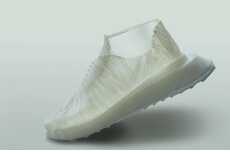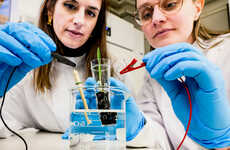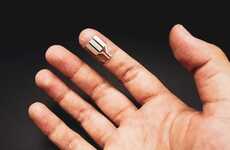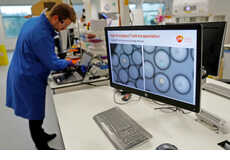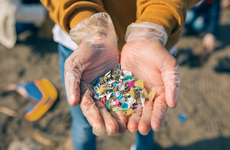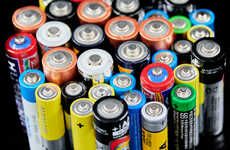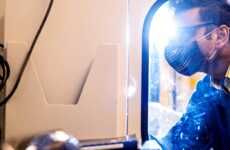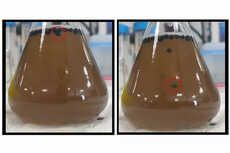Vitamin B2 Found To Be The Key
References: pnas.org & www1.umn.edu
A type of bacteria commonly found in soil and water, shewanella, has been known for some time to be capable of generating electricity from simple materials like lactic acid. This capability enables them to access and dissolve metals, such as iron, as part of their diet. However, until now, no one knew exactly how they accomplished this feat.
Researchers at the University of Minnesota's BioTechnology Institute have discovered that the key chemical that enables this reaction is riboflavin, also known as vitamin B2. According to the news release, “The interdisciplinary research team, which included several students, showed that bacteria growing on electrodes naturally produced riboflavin. Because riboflavin was able to carry electrons from the living cells to the electrodes, rates of electricity production increased by 370 percent as riboflavin accumulated.â€
This major biochemical advance, published in the March 3 issue of the Proceedings of the National Academy of Sciences, could lead to new sources of renewable energy, or could even be potentially reversed to help prevent metallic corrosion on ships.
Researchers at the University of Minnesota's BioTechnology Institute have discovered that the key chemical that enables this reaction is riboflavin, also known as vitamin B2. According to the news release, “The interdisciplinary research team, which included several students, showed that bacteria growing on electrodes naturally produced riboflavin. Because riboflavin was able to carry electrons from the living cells to the electrodes, rates of electricity production increased by 370 percent as riboflavin accumulated.â€
This major biochemical advance, published in the March 3 issue of the Proceedings of the National Academy of Sciences, could lead to new sources of renewable energy, or could even be potentially reversed to help prevent metallic corrosion on ships.
Trend Themes
1. Renewable Energy Generation - The discovery of riboflavin as a key chemical for generating electricity from bacteria opens up opportunities for new sources of renewable energy.
2. Electrochemical Innovation - Understanding the process of riboflavin carrying electrons from living cells to electrodes can inspire innovative advancements in electrochemical technology.
3. Bio-inspired Corrosion Prevention - The ability of bacteria to dissolve metals as part of their diet suggests the potential of leveraging riboflavin or similar compounds to develop bio-inspired methods for preventing or reducing metallic corrosion in industries such as shipbuilding.
Industry Implications
1. Renewable Energy - The renewable energy industry can explore the use of bacteria and riboflavin to develop more efficient and sustainable energy generation systems.
2. Electrochemical Technology - The electrochemical technology industry can leverage the understanding of riboflavin as an electron carrier to improve the efficiency and performance of electrochemical devices and systems.
3. Metal and Corrosion Prevention - Industries involved in metal manufacturing, shipbuilding, and corrosion prevention can explore the use of riboflavin or bio-inspired methods to prevent or reduce metallic corrosion.
2.6
Score
Popularity
Activity
Freshness
